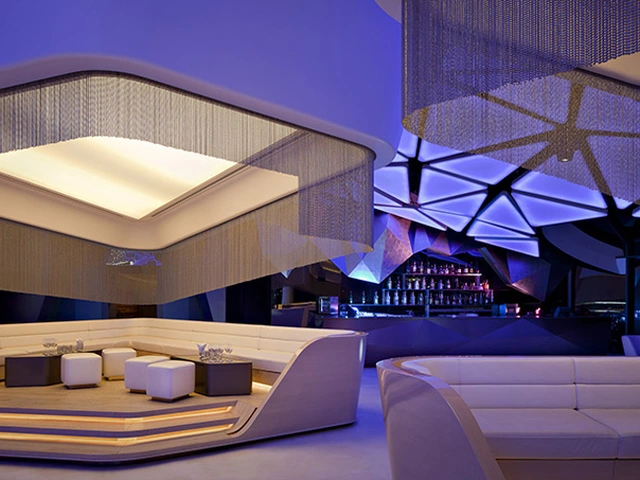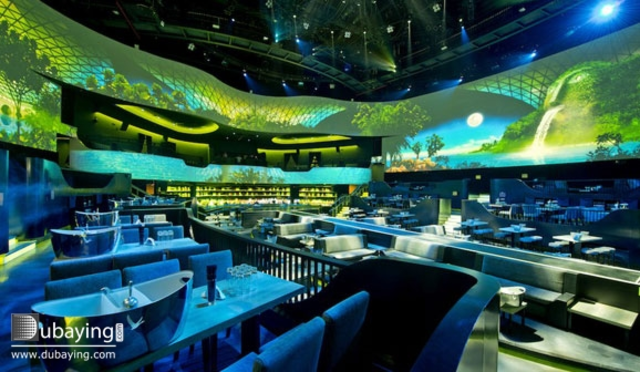London doesn’t sleep-and neither should you.
By 11 p.m., most cities quiet down. In London, the real party just begins. From hidden speakeasies tucked behind bookshelves to massive clubs where DJs drop beats until sunrise, the city’s nightlife isn’t just a scene-it’s a legacy. You don’t come to London to drink. You come to experience decades of music, rebellion, and culture poured into every corner of the night.
The 100 Club: Where rock n’ roll was born
Open since 1942, The 100 Club on Oxford Street isn’t just a venue-it’s a time machine. This is where Chuck Berry played his first UK show, where The Clash headlined their first major gig, and where Sex Pistols once caused a riot that made headlines across the country. The walls are stained with decades of sweat, smoke, and screaming fans. The stage is small, the ceiling low, and the sound? Pure, unfiltered energy. If you want to feel what live music meant before it became a stream, this is where you stand.
The Windmill, Brixton: The birthplace of punk’s DIY spirit
Don’t expect velvet ropes or bottle service here. The Windmill is a brick-walled pub with a back room that’s hosted everyone from Arctic Monkeys to experimental noise bands playing for free. It’s run by volunteers, lit by string lights, and smells like old beer and ambition. This is where the punk movement didn’t just happen-it was built. You’ll see 19-year-olds with homemade zines sharing stages with seasoned musicians. No VIP section. No cover charge after midnight. Just raw talent and a crowd that’s there for the music, not the Instagram post.
Fabric: The temple of techno
Fabric opened in 1999 and never looked back. With its twin rooms-Fabric and FabricLive-it became the global blueprint for club design: industrial concrete, sub-bass that vibrates your ribs, and a sound system so precise you can hear the individual clicks in a drum loop. It’s been raided by police, shut down for safety violations, and reopened because the city couldn’t afford to lose it. If you’ve ever danced in a club where the music feels like a physical force, Fabric made that happen. It’s not just a club-it’s a cultural institution. DJs like Carl Cox, Nina Kraviz, and Peggy Gou have all played here on their way to global fame.
The Blind Pig: London’s best-kept secret
Find it by looking for the unmarked door near Soho’s Greek Street. No sign. No website. Just a buzzer and a doorman who’ll ask if you’re on the list. Inside, it’s dim, cozy, and packed with jazz musicians, poets, and people who’ve been coming since the 80s. The music changes every night-sometimes soul, sometimes Latin jazz, sometimes spoken word with live percussion. The bar serves whiskey neat and gin cocktails made with house-infused botanicals. You won’t find a cocktail menu. You’ll be asked what you’re in the mood for. Then the bartender will make you something you didn’t know you needed.
The Eagle: A gay pub that changed history
On the corner of Old Street, The Eagle has been a safe haven since 1967-the year homosexuality was partially decriminalized in the UK. It’s not flashy. No neon. No themed nights. Just wooden benches, dartboards, and a crowd that’s as diverse as the city itself. It was here that the first UK Pride march started in 1972. The walls are covered in decades of memorabilia: old flyers, protest signs, photos of queens and activists. The beer is cold. The conversation is real. And if you’re lucky, you’ll hear someone tell the story of how this place kept a community alive when the world wasn’t ready for them.
Wagamama’s rooftop bar: Unexpected elegance
Wait-Wagamama? Yes. The rooftop bar above the restaurant in Shoreditch is where businesspeople, artists, and tourists mix without pretense. It’s got panoramic views of the city skyline, low-slung seating, and drinks that taste like they were crafted by someone who actually knows what they’re doing. The gin and tonic here isn’t just a drink-it’s a ritual. Fresh lime, house-made tonic, and a single sprig of rosemary. You can’t book it. You just show up, grab a spot near the edge, and watch the sun dip behind the Shard while the city lights blink on one by one.
Camden Palace: Where legends still walk the floors
Now called KOKO, this grand Victorian building on Camden High Street used to be the Camden Palace. It’s where Amy Winehouse played her first big gig, where Oasis played a surprise show that turned into a riot, and where the original Britpop scene exploded. The ceiling is painted with gold leaf. The balconies still creak under the weight of dancing crowds. Even now, when you walk in, you can feel the ghosts of 90s punk, 80s new wave, and 70s glam rock lingering in the air. It’s not just a venue-it’s a cathedral of rebellion.
Why these spots matter more than the rest
London’s nightlife isn’t about how fancy your drink looks. It’s about what happened here. The 100 Club didn’t just host gigs-it helped shape rock music. The Windmill didn’t just let bands play-it gave them a voice when no one else would. Fabric didn’t just play techno-it redefined what a club could be. These places survived because they cared more about the music, the people, and the moment than they did about profit.
Most tourist guides will tell you to go to Soho clubs with bottle service and VIP tables. Those places are fine. But they’re not London. London is the dive bar where the bartender remembers your name. It’s the club where the DJ plays a track no one else has heard. It’s the pub where a stranger buys you a pint because you said you liked jazz.
What to bring, what to leave behind
- Bring: Comfortable shoes. You’ll walk miles. Cash. Many places still don’t take cards after midnight. A sense of curiosity. And maybe a light jacket-London nights get chilly, even in summer.
- Leave behind: Expectations. Don’t show up at The Blind Pig looking for a dance floor. Don’t go to The Eagle expecting EDM. Don’t assume every place has a dress code. London’s best nights happen when you let go of the script.
When to go and how to avoid the traps
Weekends are packed. If you want real atmosphere, go on a Tuesday or Wednesday. Many of these spots have special events then-live jazz, underground DJs, poetry slams. Avoid the clubs that advertise "£10 entry with free shots" on social media. Those are tourist traps. The real spots don’t need ads. They’re full because people keep coming back.
Also, skip the Uber surge pricing. Walk. Take the night bus. London’s night tube runs Friday and Saturday, but it doesn’t go everywhere. Sometimes the best part of the night is the walk between venues-past closed shops, glowing alleyways, and strangers laughing in doorways.
Final thought: It’s not about the night-it’s about the people
London’s nightlife isn’t about the neon signs or the bouncers or the drink menus. It’s about the woman who sang blues at The 100 Club at 2 a.m. and made the whole room hold its breath. It’s about the guy who ran The Windmill for 30 years without ever taking a salary. It’s about the DJ who played a 12-minute ambient track because no one else would.
These places aren’t just bars and clubs. They’re living archives. They’re where history doesn’t sit in a museum-it’s happening right now, in the middle of the night, in a room full of strangers who just became a community.
What’s the best time to visit London for nightlife?
Late spring through early autumn (May to September) is ideal. The weather’s warmer, outdoor spaces like Wagamama’s rooftop are open, and festivals like Notting Hill Carnival bring extra energy. But London’s scene is alive year-round. Winter nights are quieter but more intimate-perfect for jazz bars and hidden speakeasies.
Are these venues still open after 2025?
Yes. All the venues listed-The 100 Club, Fabric, The Windmill, The Eagle, and KOKO-are still operating as of late 2025. Some have updated interiors or added safety measures, but their core spirit remains unchanged. The city has made efforts to protect historic music venues through grants and zoning laws, recognizing them as cultural landmarks.
Do I need to dress up for London nightlife?
No. Most iconic spots have no dress code. The 100 Club and The Windmill welcome jeans and sneakers. Fabric asks for smart-casual-no sportswear or flip-flops. The Blind Pig and The Eagle are all about comfort. If you’re going to a high-end bar like Wagamama’s rooftop, avoid athletic wear. But in London, style is about confidence, not labels.
Is London nightlife safe at night?
Generally yes. London is one of the safest major cities for nightlife in Europe. Stick to well-lit streets, avoid isolated alleys after 2 a.m., and use the night bus or Tube instead of walking long distances alone. Most venues have security staff, and the police patrol popular areas. Trust your gut-if a place feels off, leave. The best nights happen when you’re relaxed, not worried.
Can I find vegan or alcohol-free options?
Absolutely. Most of these venues now offer non-alcoholic cocktails, craft sodas, and plant-based snacks. The Blind Pig has a rotating selection of zero-proof drinks made with house-distilled botanicals. Fabric serves vegan bites from local suppliers. Even The Eagle has a full vegan menu now. You don’t have to drink to be part of the night.





